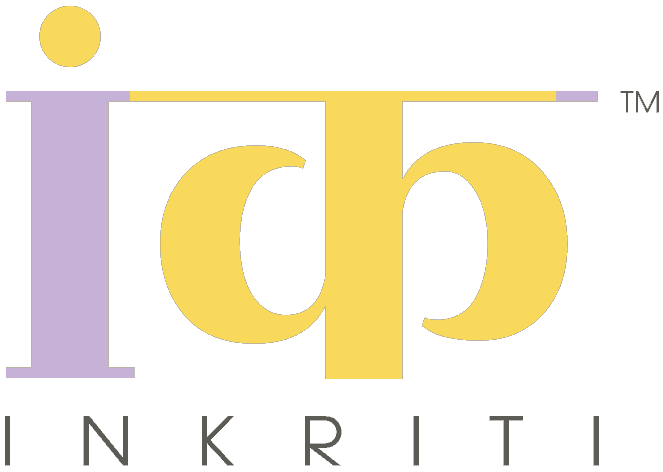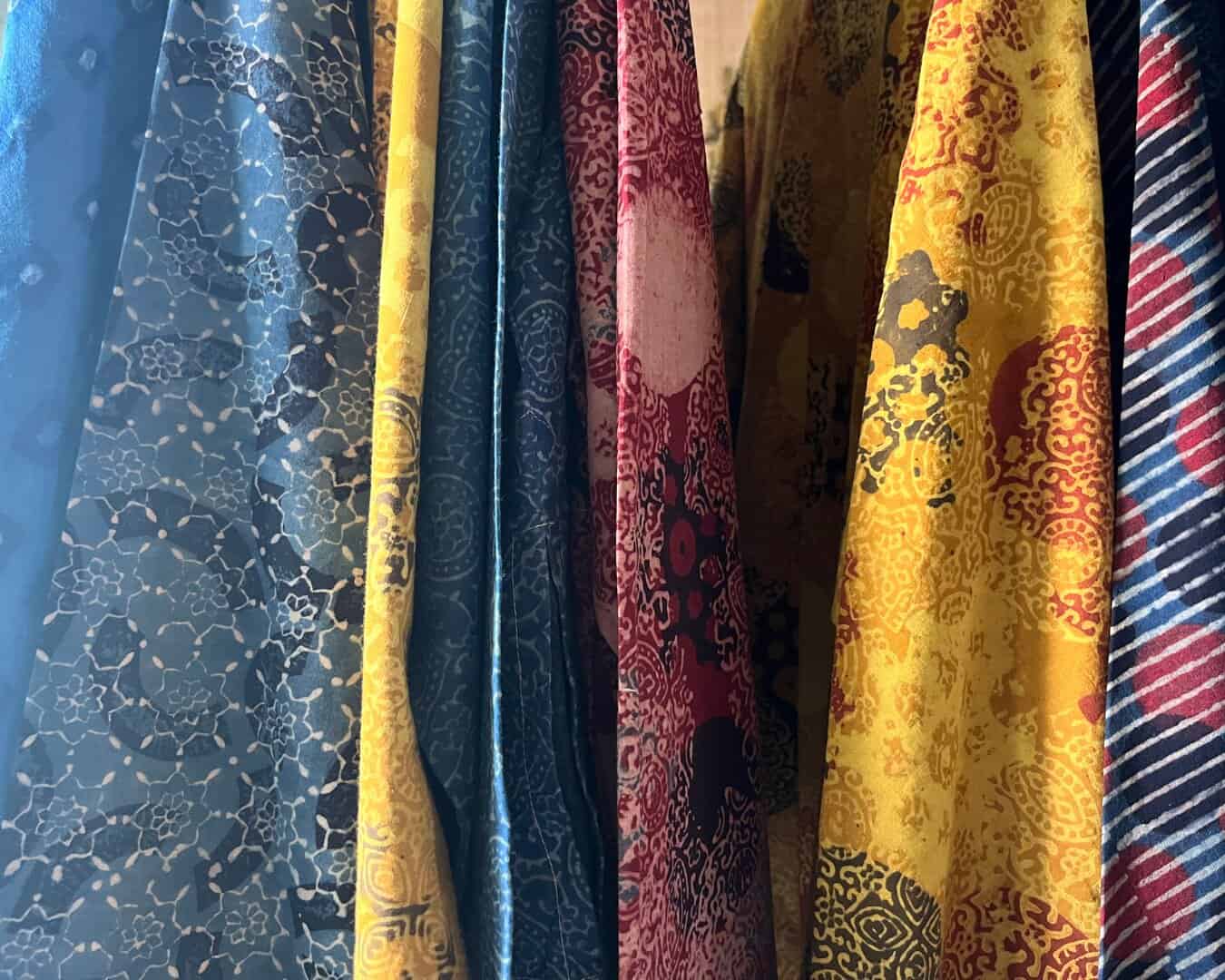
SUSTAINABILITY WITH RESPECT TO THE TEXTILES AND HANDLOOM INDUSTRY
What is sustainability?
Sustainability as inferred by the most basic definition of the word, would mean maintaining the same level or state that we are in. It is a state where we are neither harming the environment nor are we helping it.
The future of sustainability is regeneration, where we are benefiting and helping the environment and not harming it. If we observe the current scenario, it is quite evident that we haven’t achieved the stage of sustainability.
THE SUSTAINABILITY GAP
New sustainable materials that are entering the market are usually targeted towards 1% of the population because most of the time only they can afford it or they are yet to reach the phase of optimum utilization. When the majority of the waste is produced by the mass population, shouldn’t sustainability be also made affordable for the masses? This is the gap that has to be bridged.
This article focuses on understanding and developing our perspective on the word “Sustainability”. We have focussed on Textiles as the subject. Our point of view on this topic is multidimensional. It is governed and guided by our thinking as a designer, a student, a consumer and as a person who hopes for a better future.
Before industrialisation, people met their needs by making the products by handDue to the increase in the ability to make the products by the machines as well as due to the increase in the population, the consumption has increased. There are no limits to the expectations of the consumer or to the number of product available.
With so many different and ambiguous interpretations of the same word, it gets difficult to understand as to where one can contribute and have a positive effect. Sustainability is a global problem, but does this imply for the solution to be a global one?
SUSTAINABILITY IN THE HANDICRAFTS AND
HANDLOOM INDUSTRY
We looked into the link between sustainability and the handloom and handicraft industry.
The layers are as follows:
- Sustainability in Material
- Sustainability in Technique
- Sustainability in Design Process
- Sustainability in Market
We looked at the mentioned layers through the ‘local’ lens and handloom and handicraft industry

- SUSTAINABILITY IN MATERIAL:
In the most conventional sense, textile fibres are divided into two broad categories based on their source- Natural and Manmade.
The choice of material plays a very important role in determining the final outcome of the product as it depends on the properties and characteristics associated with the material.
When we look at the life cycle of any commodity, it begins from growing the raw material, extracting it, putting it into the manufacturing process to create the commodity, and then finally using the product. What we forget about is what will happen after the product has fulfilled its purpose. How does the material reach its stage of decay or regeneration?
Let’s Visualise a product; after it has been used to its maximum capacity, 90% of it has decayed or disposed of, and we are left with 10% that isn’t going anywhere. Slowly, 10% of each such product starts stacking up and creating a bulk of waste that will continue to exist. To overcome this scenario, we have the following options: either to repurpose or regenerate the 10% and infuse it back into the life-cycle creating a closed-loop; or choosing a material which decays completely.
Material and handloom & handicrafts industry:
The most common and widely used natural materials in India are cotton, jute, wool, and silk. There are multiple types of each of these materials based on the geographical region of the country.
Since early days, handloom and handicraft products have been produced by using natural raw materials available in the local surroundings. The fabrics were made from natural fibres, for example, silk has been produced and woven in the North-eastern region of India. The dyes were extracted from local minerals, flora, and fauna- for example black colour was obtained by fermenting scrap iron pieces mixed with jaggery for two weeks and yellow colour was derived from pomegranate seeds. Even different fabric finishes were added using cow dung, seeds, crushed flowers, and different varieties of plants. For instance, the shine was added to the fabric by soaking it in a mixture of cow milk and natural resin. This made the products completely biodegradable.
Many such natural fibres have other properties too- wool waste has been commonly used as manure and fertilizer by farmers because of the protein present in the fibres.
This creates a closed-loop life-cycle of these products that either end with complete biodegradation or regeneration of left over material and waste, which are then re-incorporated in the cycle. Thus, material choice plays an important role in the goal towards regenerative sustainability.
- SUSTAINABILITY IN TECHNIQUE
The question that presents is- are all craft techniques sustainable? Two different techniques were looked at- one a resist-block printing craft called Dabu and the other a weaving craft called Khadi.
Dabu is practiced in the Rajasthan. The production process is laborious and involves multiple steps with large quantities of water being used in the entire process. Rajasthan is a desert region that is prone to droughts. The intense use of water in block-printing impacts the production as the water sources get depleted. This makes the process unsustainable at times.
Khadi means any fabric that is hand-spun and hand-woven. It is an indigenous fabric of India. In a research conducted on the life-cycle assessment of the Khadi-handloom industry, it was observed that khadi-handloom fabric (i.e. any fabric that is hand-spun and hand-woven) has a lower environmental impact as it used hand techniques that do not require any electrical energy source and the consumption of water is lower. It creates more employment potential and is more socially inclusive compared to mass-production techniques.
After observing the example of Dabu and Khadi above, the techniques can be divided into two parts- techniques that can remain as a craft because mass production might result in more harm than benefit and techniques that can be incorporated to increase production.
Another question that presents is regarding the use of technology- does sustainability mean no use of technology?
There are negative environmental impacts of certain techniques, which will impact the long term sustainability and craft. There are projects that are designed to minimize the risks of environmental collapse.
One instance was narrated to me by one of the designers I interviewed. There are two basics types of looms that are used commonly- the wooden loom and the iron loom. Both have similar structures and are operated by foot pedals. The only difference is the material used to construct the loom. She spoke about how a mechanical gear was being attached to the iron loom to make it easier to operate the pedal. It was taken a step further by attaching a power source, a small generator, to the gear. This converted the original handloom to a basic power loom. The fabrics produced by these looms are not that different from the fabrics made on a traditional handloom. The only change is the time of production. However, this compromised the authenticity and ethics associated with the technique. How much can we change a craft technique, that it no longer remains a craft and becomes a new technique in itself and doesn’t compromise its integrity?
It is was discussed with designers in this sector and majority of them spoke that handcrafted doesn’t necessarily mean that modernity stops being relevant and the craft technique is pushed back to when it began. Modern science and technology can create ways to ease the hardships and work process. But at the same time the essence of handcrafted means the involvement of the human hands- if the human involvement becomes negligible it cannot be classified as handcrafted techniques. One solution to this is to be transparent about the process and technique, as the lack of it will only result in distrust and loss of faith in the long run.
Sustainability in handloom and handicraft techniques works on three platforms- environmental, economic and cultural. The craft techniques use supplies that are obtained from the natural resources, the types of equipment used do not require any electrical source and are operated by manpower, thus reducing the use of non-renewable sources. The handloom and handicraft industry generates employment opportunities, hence improving the socio-economic status of all people associated with it. It is the second-largest employer of people living in rural areas after agriculture. It strengthens communities and facilitates self-reliance and self-sufficiency. This in turn contributes towards preserving the culture, tradition, and knowledge associated with the craft by transferring skills from one generation to the next. The optimum functioning and involvement of the three platforms together can strengthen the pathway towards a regenerative stage of sustainability.
- SUSTAINABILITY IN DESIGN AND NEED OF THE HOUR
The handcrafted products have a unique aesthetic attached to them that is often categorised as traditional. Designs associated with handicrafts have been around for decades, many of them even for centuries, with miniscule changes taking place at times. It is difficult to sustain the craft as the consumers’ preferences keep changing and there is a variety of other products available in the market. An alliance between designers and artisans can help overcome this.
Designers currently in the field mention that craftsmen have been practicing the same traditional designs since the olden days. Many people interpret design intervention as developing designs that resemble the latest trend in the market or following the different international trend forecast. These trends do not amalgamate well with handcrafted design and aesthetics. Attempting to convert handcrafted designs drastically to suit the market leads to a loss in the identity and integrity of the craft.
Any change can be implemented only in a gradual manner keeping in mind the history and importance attached to the craft and the artisans practicing it. The artisans linked with the craft have been practicing the craft for generations. There is a need to be respectful towards the sentiments associated and understand the value attached to it before implementing design intervention. It is also so important to keep in mind the skill set and skill level of craftsmen, along with their inclination towards change. These are some of the important factors that influence design intervention.
Instead of replicating the modern design trends, a new aesthetic can be developed that strengthens the foothold of craft in the present-day scenario. This aesthetic will uphold the identity and integrity of craft along with showcasing what the modern world has to offer. This is what Inkriti is working towards.
- SUSTAINABILITY IN MARKET
“ 90% of the world’s designers spend all their time addressing the problems of the richest 10% of the worlds consumers, before I die I want to turn that silly ratio on its head ”- Paul Polak, founder IDE
In the present-day market scenario, handcrafted products cater to a niche segment of the market, most commonly towards the high-end and luxury side. Handloom and handicraft products are not commodity products. These products are often categorised based on their purity and craftsmanship.
The market of handcrafted products was starting to shrink due to the lack of awareness about the crafts, availability of cheaper though less sustainable machine-made options , and the continuously changing trends and demands of the consumer.
The buying trends in the mass population are oriented more towards price- points rather than towards sustainability. The debates and discussions on the affordability of the craft have been going on for the past few years. Particular price points can’t be lowered as it would lead to injustice towards the hard work and effort put in by the craftsmen. How do we overcome this challenge? Can craft be made affordable for the mass?
This boundary can be broken by creating awareness campaigns and marketing strategies and targeting local mass consumers. This would educate, inform, and highlight the importance of craft and the advantages of handcrafted along with the reasons that make it a better choice than the machine-made alternatives.
There is a certain distrust amongst the consumers due to the adulteration of products. Many times the design and aesthetic of the craft techniques are replicated via machines and then sold under the ‘handcrafted’ tag. Due to this the quality and integrity of the product diminishes, which leads to skepticism amongst consumers. This also takes away the livelihood of the artisans associated with the craft.
To counter this, the Government of India launched Handloom Mark and Craftmark in 2006. These marks aim to certify the genuineness of the craft, preserve their integrity and quality and promote their growth.
Affordability in the conventional sense refers to the price points of any product. Many a times, going for cheaper alternatives ends up costing more due to the hidden or the unseen costs. For example, in an era where people replace products rather than repairing them, cheaper options end up costing more and this leads to unsustainable practices.
In this case, if we can generate awareness about the authenticity, qualities, and advantages of using a handcrafted product, it would not only benefit the consumer but also the environment around us. It has been commonly observed that people tend to take more care of handcrafted products as compared to the machine-made alternatives. They repair, rather than replace, the products that have been patiently and individually crafted. There are emotions and narratives attached to them, which brings together the craftsman and the consumer. This approach would also ignite a behavioural change in consumerism towards a more sustainable one. The price points of the handcrafted products need not necessarily be lowered to target a larger audience. The awareness about the reconstructed meaning of affordability and the true essence of craft, which is to be sustainable on multiple platforms simultaneously, will help attract a larger audience. Thus, creating and accessing the local mass consumers would in turn lead to a regenerative market that would create and sustain its demand and supply chain.

“Be the change you want to see in the world.”
Sustainability has been the ‘talk of the floor’ for the last few years. Though the level of understanding about what it means varies, most of the time it is associated with the Environment context- we forget the other two pillars, Society and Economy.
The research done was done by our co-founder as a part of her Masters project. This article cum document served as a ground for us to setup multiple frameworks and processes for the modus operandi of Inkriti. We keep in mind all the three pillars of sustainability as we strive to make our business practices smoother and efficient at the same time.
Credits: These excerpts have been taken from “Lowकल (pronounced local): A regenerative perspective” written by Matrika Bhandari as a part of her MA Textile dissertation at Royal College of Art (during the period of 2019- 2023).



